December 2008
Monthly Archive
Tue 2 Dec 2008
ED GORMAN – Will You Still Love Me Tomorrow?
Berkley; paperback reprint; December 2002. Hardcover edition: Carroll & Graf, January 2001.
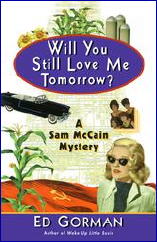
Not to make it too personal, but September 1959 was the month I started my senior year in high school, and that’s the very same autumn in which this nostalgic trip back to small-town America takes place. I was younger then than Gorman’s private eye protagonist, Sam McCain, but I remember drive-in movies, rock-and-roll, drugstore lunch counters, Gold Medal paperbacks, and Edd “Kookie” Byrnes.
I also remember some of the darker sides of life in the late 50s: polio; segregation; Khrushchev’s threats; the remnants of McCarthyism. And it’s the Communist menace, or threat thereof, that forms the background for this latest of three mysteries Gorman has placed in Black River Falls, Iowa.
The first death is that of a liberal former member of Truman’s administration, and the body count slowly but surely begins to climb from there. As good as the mystery is, even more enjoyable is Sam’s love life, which to put it mildly, is a mess, and I identified with every awkward moment of it.
Along with an unerring sense of that not-so-long-ago period of American history, Gorman’s quiet but sarcastically obvious sense of humor is what makes this book worth looking for. Very enjoyable.
— November 2002 (slightly revised)
[UPDATE] 12-02-08. After a gap of three years — too long! — Sam McCain made his seventh appearance last year in Fools Rush In, which I haven’t read yet. I will have to do something about that.
The Day the Music Died. Carroll & Graf, Jan 1999; Berkley, pb, Apr 2000.
Wake Up Little Susie. Carroll & Graf, Jan 2000; Berkley, pb, Feb 2001.
Will You Still Love Me Tomorrow? Carroll & Graf, Jan 2001; Berkley, pb, Dec 2002.
Save the Last Dance For Me. Carroll & Graf, Feb 2002; Worldwide, pb, July 2003.
Everybody’s Somebody’s Fool. Carroll & Graf, Dec 2002; Worldwide, pb, June 2004.
Breaking Up Is Hard To Do. Carroll & Graf, Feb 2004; Worldwide, 2005.
Fools Rush In. Pegasus, Mar 2007; trade paperback, Mar 2009.
Tue 2 Dec 2008
REVIEWED BY WALTER ALBERT:
DOWNHILL. US title: When Boys Leave Home. Gainsborough, 1927; Alfred Hitchcock, director; Claude McDonnell, cinematographer; Ivor Novello, Ben Webster, Robin Irvine, Sybil Rhoda, Isabel Jeans, Ian Hunter. Shown at Cinecon 41, September 2005.
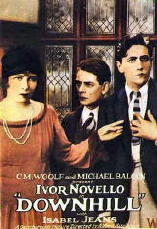
Ivor Novello stars in a film adaptation of his own play, and is once again directed by Hitchcock, whose previous film was The Lodger in which Novello played the prime suspect.
Although Novello is best known as a consummate stage performer and composer of popular songs, the screen persona I’ve seen in at least three films shows a darker, risk-taking side.
In Downhill, he’s a popular public school student, from a wealthy family, who takes the blame for a friend’s indiscretion with a barmaid and slides downhill after his father throws him out.
The film shows the influence of German expressionism on Hitchcock, with some striking photography in an extended dance-hall sequence that, although it takes place in Paris, recalls images of decadent Berlin settings in the 1920s.
Tue 2 Dec 2008
PAULA PAUL – An Improper Death.

Berkley, paperback original; first printing, November 2002.
The second mystery adventure of Dr. Alexandra Gladstone has much the same virtues and flaws as the first (Symptoms of Death, May 2002). The problems of being a female doctor in Victorian England are abundantly illustrated. Trying to do surgery on a male patient’s privates, for example, takes a good amount of strategic planning.
And in general Ms. Paul does a more than credible job in re-creating the life and times of the lower classes; it was a hard life. Where she falters is in the mystery itself, that of the death of a former British admiral, found drowned on the beach near his home, clad only in women’s undergarments (hence the title).
Constable Snow’s mysterious behavior which follows seems strained and forced, and so do several other incidents. Worse, though, is the killer’s behavior, totally unexplainable, making any attempt to follow the clues all but hopeless.
So, definitely a mixed bag. Read this for the characters, not for the detective work.
[UPDATE] 12-02-08. There were only three books in the Dr. Gladstone series:
Symptoms of Death. Berkley, pbo, May 2002.
An Improper Death. Berkley, pbo, Nov 2002.
Half a Mind to Murder. Berkley, pbo, Oct 2003.
In a series coming before the Gladstone books were three adventures of Hillary Scarborough & Jane Ferguson, a mismatched pair of Southern belle decorators, all as by Paula Carter:
Leading an Elegant Death. Berkley, pbo, Feb 1999.
Deathday Party. Berkley, pbo, Oct 1999.
Red Wine Goes with Murder. Berkley, pbo, July 2000.
Under her own name and as Catherine Monroe, Paula Paul has also written a number of other books, most of them historical fiction or romantic suspense.
Tue 2 Dec 2008
REVIEWED BY WALTER ALBERT:
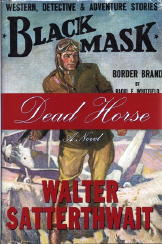
WALTER SATTERTHWAIT – Dead Horse. Denis McMillan Publications, hardcover, 2006.
Sattherwait’s novel speculates on the private relationship of [pulp author] Raoul Whitfield and his socialite wife, Mrs. Emily Davies Vanderbilt Thayer Whitfield, who was found dead of a gunshot wound in 1935, a death that was never explained to anyone’s satisfaction.
Satterthwait’s extensive research only serves to strengthen the plausibility of his depiction of the doomed marriage and ill-matched couple, and the terse, finely honed prose is a fitting tribute to a mystery writer of uncommon stylistic gifts.
___
Bibliographic data: RAOUL WHITFIELD. Expanded from Crime Fiction IV, by Allen J. Hubin. Criminous novels and collections only:
WHITFIELD, RAOUL (Falconia). 1896-1945; pseudonym: Temple Field.
* Green Ice. Knopf, 1930; No Exit Press, UK, 1988. Hardcover reprint: Grosset & Dunlap, early 1930s. Reprinted in 3 Star Omnibus: Trent’s Last Case, Green Ice, The Middle Temple Murder, Knopf, 1936. Later hardcover reprint: Gregg Press, 1980. Also published as: The Green Ice Murders. Avon Murder Mystery Monthly #46, pb, 1947. Later paperback reprints: Avon PN373, 1971; Quill, 1986.
* Death in a Bowl. Knopf, 1931; No Exit Press, UK, 1988. Paperback reprints: Avon PN337, 1970; Quill, 1986.
* The Virgin Kills. Knopf, 1932; No Exit Press, UK, 1988. Paperback reprint: Quill, 1986.
* Jo Gar’s Casebook. Crippen & Landru, hc, 2002. Story collection. RD = Originally published as by Ramon Decolta:
West of Guam [RD] Black Mask, Feb 1930
Death in the Pasig [RD] Black Mask, Mar 1930
Red Hemp [RD] Black Mask, Apr 1930
Signals of Storm [RD] Black Mask, Jun 1930
Enough Rope [RD] Black Mask, Jul 1930
The Caleso Murders [RD] Black Mask, Dec 1930
Silence House [RD] Black Mask, Jan 1931
Shooting Gallery [RD] Black Mask, Oct 1931
The Javanese Mask, [RD] Black Mask, Dec 1931
The Black Sampan [RD] Black Mask, Jun 1932
The Siamese Cat [RD] Black Mask, Apr 1932
The China Man [RD] Black Mask, Mar 1932
Climbing Death [RD] Black Mask, Jul 1932
The Magician Murder [RD] Black Mask, Nov 1932
The Man from Shanghai [RD] Black Mask, Apr 1933
The Amber Fan [RD] Black Mask, Jul 1933
The Mystery of the Fan-Backed Chair. Cosmopolitan, Feb 1935
The Great Black. Cosmopolitan, Aug 1937
FIELD, TEMPLE. Pseudonym of Raoul F. Whitfield, 1896-1945.
* Five. Farrar & Rinehart, 1931.
* Killer’s Carnival. Farrar & Rinehart, 1932.
Mon 1 Dec 2008
NICK O’DONOHUE – Wind Chill.
Paperjacks, paperback original, 1985.
By rights, in a world that was absolutely perfect, this would have followed my review of L.A.Taylor’s Only Half a Hoax, as here is another book taking place in the twin cities area of Minneapolis-St. Paul. And if that weren’t connection enough, in 180 degree contrast (well, at least well over 60), this one takes place in the dead of winter, whereas what happened in that earlier book occurred instead in the balmy breezes (relatively speaking) of April.
Ice fishing on a Minnesota lake on New Year’s Day is not my idea of a lark, nor that of private eye Nathan Phillips either. Especially when the first catch he and his fishing buddy, homicide lieutenant Jon Pederson, make that day is that of a waterlogged corpse which has been mutilated beyond recognition.
And as a coincidence beyond belief, the body is somehow related to a case Pederson and the FBl have been working on, and now Phillips is involved too. As is the IRA, and a host of new clients for Phillips, attracted by the publicity, he guesses, but all of them, strangely, with Irish-sounding names.
There is also a great deal of blackmail going around. You would not believe who is blackmailing who — and that is the problem with this book. I didn’t believe it. While O’Donohoe tries hard, he never did convince me. He has a nice easy style, for the most part, but every once in a while I found myself stopping short with a passage that simply stumped me for a moment.
It is like listening to someone who is either afflicted with a faulty (or very selective) memory or (less seriously?) with an incurable habit of going off at wrong angles.
Angles, at least, I wasn’t expecting. I don’t know if the problem was in the editing and the proofreading (or lack thereof), or if it was just me. Simply say that something failed to click — but when Phillips admits on page 194 that “I’d been stupid,” I could only nod my head, in complete agreement.
— From Mystery.File 1, January 1987 (slightly revised).
[UPDATE] 12-01-08. Even with my review notes on the book, I don’t remember anything more about it than what I said back then, over 20 years ago. I may not have sounded very positive about it in my comments, but if I’m willing to give him another try, then I see no reason why you shouldn’t.
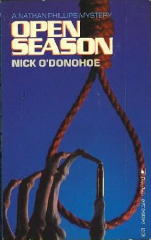
I also don’t have a cover image to show you, since my own copy is buried away somewhere and essentially inaccessible. We’re therefore making do with the cover of another of Nathan Phillips’s adventures, as you’ll see here to the right:
Besides the three of them in the same series (see below), O’Donohue has one other entry in Al Hubin’s Crime Fiction IV, an SF-fantasy novel with some criminous content. He also wrote a small handful of other fantasy paperbacks, but none of them cry out to be mentioned here.
O’DONOHOE, NICK [i.e., Nicholas Benjamin O’Donohoe]. 1952- .
* April Snow. Raven House, 1981. [Nathan Phillips]
* Wind Chill. PaperJacks, 1985. [Nathan Phillips]
* Open Season. PaperJacks, 1986. [Nathan Phillips]
* Too Too Solid Flesh. TSR, 1989. [New York City, NY; Future]
Mon 1 Dec 2008
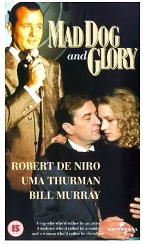 MAD DOG AND GLORY. Universal Pictures, 1993. Robert De Niro, Uma Thurman, Bill Murray, David Caruso, Mike Starr, Kathy Baker. Screenwriter: Richard Price; director: John McNaughton.
MAD DOG AND GLORY. Universal Pictures, 1993. Robert De Niro, Uma Thurman, Bill Murray, David Caruso, Mike Starr, Kathy Baker. Screenwriter: Richard Price; director: John McNaughton.
I’d never heard of this movie until I accidentally stumbled across it on HBO one late night last week. Figured I’d watch 10 or 15 minutes, then on to Cinemax or TCM to see what else was on, but the funny thing is, I kept watching.
It’s not a dump-in-the-time-slot sort of filler at all, but an mostly entertaining “where was I when this film came out” type of pleasant surprise.
Most of the R-rated violence comes at the beginning, then things settle down to an edgy nervous-comedy sort of picture, with Robert De Niro playing Wayne ‘Mad Dog’ Dobie, a mild-mannered (if not timid) police photographer who is rewarded for saving the life of a tough guy in the crime business (Bill Murray). Frank Milo – that’s his name – is not a crime lord per se, but a stand-up comedian who is also one of those guys who has connections and a carful of even tougher thugs who obey his every command.
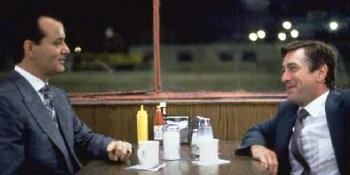
The reward? Glory (Uma Thurman), who stops by Wayne’s apartment to treat his injured hand, and in some obvious discomfort informs him that she is supposed to stay for a week. Now this would ordinarily be delightful, but it’s also unseemly – being in debt, that is, to a guy with connections to the mob like this.
The usual complications ensue. What makes this movie entertaining, when so many other movies made on smaller budgets would fail, is the level of acting on the part of all the players involved. The characters’ smallest facial expressions and their slightest gestures and body language add enormously to a plot that seems silly but is eventually made as real as tomorrow’s news. Uma Thurman is especially delightful; visibly nervous when she first knocks on Wayne’s door, she gradually gains confidence and begins to tell him the proverbial story of her life.
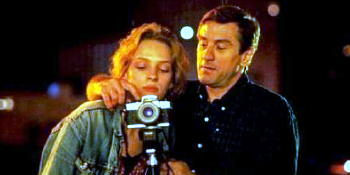
Where the edginess comes in is Wayne’s unanswered question of how much he should believe her, and in fact what it is that she feels for him, as he (against his better judgment) begins to respond to her in turn. The ending, unfortunately, dissipates all of this edginess – too wacky perhaps and (also perhaps) not as true to the story as it should have been, no matter (once again perhaps) it may (or may not) be what we (the viewers) are (and have been) anticipating.
« Previous Page

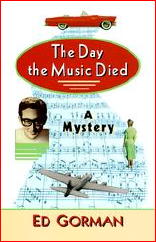



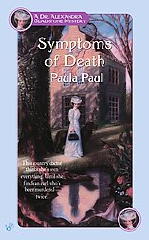


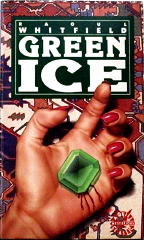
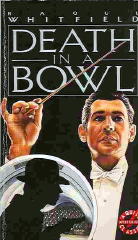
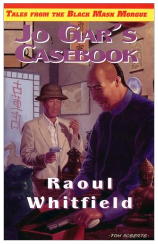

 MAD DOG AND GLORY. Universal Pictures, 1993. Robert De Niro, Uma Thurman, Bill Murray, David Caruso, Mike Starr, Kathy Baker. Screenwriter: Richard Price; director: John McNaughton.
MAD DOG AND GLORY. Universal Pictures, 1993. Robert De Niro, Uma Thurman, Bill Murray, David Caruso, Mike Starr, Kathy Baker. Screenwriter: Richard Price; director: John McNaughton.
